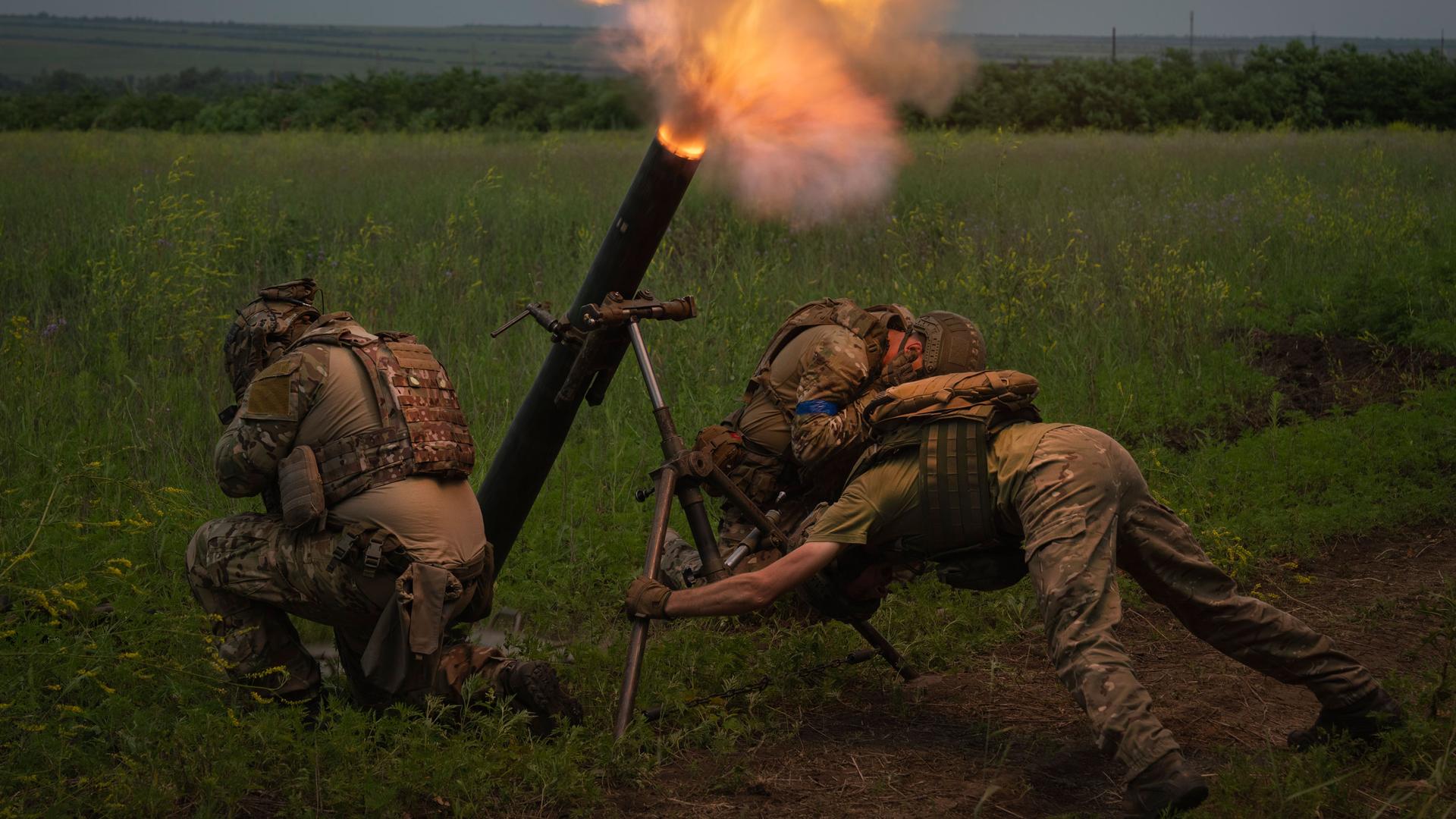Ukraine’s military counteroffensive began last month and Western officials say the country is making a major push against Russian forces in the southeast.
In a video posted by the Ukrainian president’s office on Thursday night, Ukrainian troops are claiming to have liberated the village of Staromaiors’ke in the Donetsk region, much of which is controlled by Russia.
But each bit of territory comes at a cost. Casualty rates are high on both sides of this war, and getting accurate numbers has been very difficult.
Russian officials usually do not speak about this subject. But in September last year, Russian Defense Minister Sergei Shoigu said about 5,937 Russian troops were killed in Ukraine. Even at the time, though, this figure seemed very low.
Now, a team of Russian journalists and researchers are doing the grueling work of counting Russian casualties on their own.
“In our database that had names, we already had more people that the Russian Ministry of Defense claimed were killed in Ukraine,” said Mika Golubovsky, a Lithuania-based journalist with Mediazona, an independent Russian news publication.
The team has so far gathered the names for more than 28,000 Russian troops who have died so far in the war.
The team tracks down these names by scouring the internet, tracking social media posts and local announcements — and even going to cemeteries.
“There are volunteers who are going to cemeteries, taking photos of graves. On the grave, you see the dates and then you see a photo in a military uniform, and then it’s pretty obvious that this person died in the war,” Golubovsky said.
This is risky work — taking photos at Russian cemeteries could lead to an arrest.
It’s also a painstaking process to get the full picture of Russian war casualties.
“Our data team, they knew that we’re not seeing all of the casualties, because not all information gets to social media or official statements which are major sources for this project, so the idea was to look at excess mortality,” Golubovsky said.
Dmitry Kobak, a data scientist at the University of Tubingen, in Germany, said he had been doing “excess mortality” calculations to estimate deaths due to COVID-19, and he, along with other researchers, decided to use similar methods to estimate casualties in Russia’s full-scale invasion into Ukraine.
Using projections for excess deaths, Mediazona’s data team determined that, as of the end of May this year, at least 47,000 Russian men have died in this war.
“We always compare male mortality to female mortality, this is really the key statistical trick that we use, because all military deaths in Russia, like above 99% are male, so we’re computing the ratio of male to female, so if the ratio goes up we compute that as war casualties,” he explained.
Kobak says 47,000 is a conservative estimate, but it’s also more than two times the number of all Soviet soldiers who died through nearly a decade of war in Afghanistan.
But there’s been a lack of public outcry in Russia over these losses.
Elise Giuliano, a professor of political science at Columbia University’s Harriman Institute, attributes this to increased state repression in Russia.
“In general, the level of repression has increased over the past few years leading up to the war, but since the war, it has increased by an enormous amount,” Giuliano said.
Early on, anti-war protesters in Russia got harsh prison sentences. Independent journalism and research has been suppressed, or outlawed.
But Giuliano said there’s a deeper issue affecting Russian public opinion.
“The situation that we really have to understand about Russia is that Putin and the government has worked hard to demobilize the population to kind of get them to a place where like they just don’t care about politics, they consider it dirty business, they consider it something outside that doesn’t affect their life,” she said.
Giuliano also points out that many of the troops dying in Ukraine come from underprivileged sectors of Russian society.
“There’s a willingness to look away from what’s going on, to not caring and not understanding the depth of the problem, and the number of people dying,” she said. “Feeding into that lack of concern unfortunately on the part of a lot of ordinary Russians would be, well it’s the prisoners dying, it’s the poor, rural people dying and it’s the ethnic minorities dying.”
The World is an independent newsroom. We’re not funded by billionaires; instead, we rely on readers and listeners like you. As a listener, you’re a crucial part of our team and our global community. Your support is vital to running our nonprofit newsroom, and we can’t do this work without you. Will you support The World with a gift today? Donations made between now and Dec. 31 will be matched 1:1. Thanks for investing in our work!
